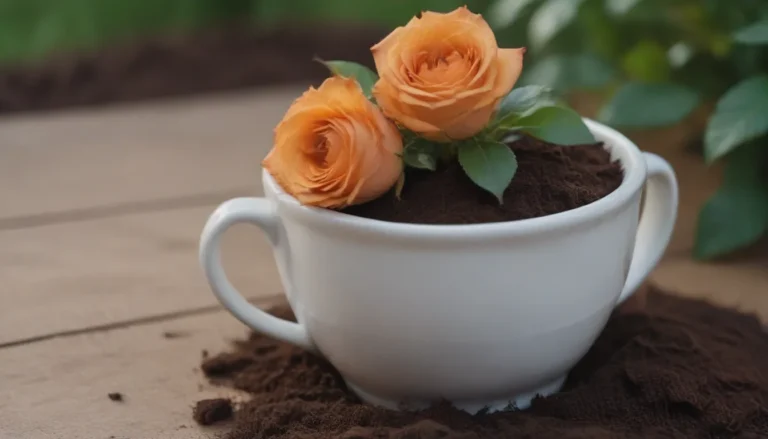How to Make Your Ferns Flourish Indoors: A Comprehensive Guide

Ferns are fascinating plants that have been thriving for millions of years. With over 12,000 species, they come in various shapes and sizes, making them a popular choice for indoor gardens. Whether you’re a seasoned plant enthusiast or a beginner looking to add some greenery to your home, understanding the basics of caring for ferns is essential for their success.
In this comprehensive guide, we’ll explore six fundamental tips to help your ferns thrive indoors. From creating a humid environment to choosing the right soil, we’ll cover everything you need to know to keep your ferns healthy and vibrant.
Fern Fast Facts
Before we dive into caring for your ferns, let’s explore some interesting facts about these ancient plants:
- Ferns reproduce through spores, not flowers and seeds.
- Fern leaves are called fronds, and most ferns lack woody growth.
- Ferns prefer dappled sunlight, high humidity, and consistent moisture.
Now that we have a better understanding of these unique plants, let’s move on to the essential tips for keeping your ferns happy and healthy.
1. Keep Your Ferns in a Humid Environment
Household ferns thrive in humid conditions, mimicking their natural habitat. Dry air can cause their fronds to turn brown and drop leaves. To create a suitable environment for your fern, consider the following:
- Regularly mist your fern: Use a spray bottle to mist your ferns, especially in the morning. This will help maintain the humidity levels they require.
- Use a tray of pebbles or clay granules: Placing your fern pot on a tray of wet pebbles or clay granules can increase the humidity around the plant without saturating the roots.
- Consider the bathroom: If possible, keep your ferns in the bathroom, as it tends to be the most consistently humid room in the house.
2. Never Let Your Fern’s Soil Get Dry
Ferns thrive in moist, loamy soil, similar to the forest floor where many species grow naturally. To ensure your ferns stay hydrated without becoming waterlogged, follow these tips:
- Check the soil moisture: Touch the soil regularly and water your ferns when the top layer feels dry.
- Avoid waterlogging: While ferns like moisture, they do not tolerate being waterlogged. Ensure proper drainage in your pots to prevent standing water.
3. Choose Soil Wisely
Selecting the right soil is crucial for the health of your ferns. Here’s what to keep in mind when choosing soil for your indoor ferns:
- Use a standard indoor potting mix: This type of soil provides the right balance of moisture retention and drainage for most fern species.
- Avoid succulent mixes or garden soil: These may not hold enough moisture for ferns or may retain too much water, leading to root rot.
4. Provide Ample Bright, Filtered Light
Ferns thrive in bright, filtered light, similar to the dappled sunlight they receive in their natural habitat. Here’s how to ensure your fern gets the light it needs:
- Avoid direct sun exposure: Too much sunlight can damage fern fronds. Opt for filtered light from north or east-facing windows.
- Supplement with grow lights: If your ferns are in a windowless room, consider using grow lights to provide the necessary light for healthy growth.
5. Maintain Cozy Temperatures
Ferns prefer temperatures between 65 to 75 degrees Fahrenheit, resembling the conditions found in most homes. Here are some temperature-related tips for your indoor ferns:
- Avoid extreme temperatures: Keep your ferns away from drafts or cold temperatures below 50 degrees Fahrenheit.
- Consider nighttime temperatures: Some fern species, like the bird’s nest fern, may benefit from slightly cooler nighttime temperatures in tropical environments.
6. Fertilize Your Ferns Regularly
As forest floor plants, ferns thrive on a constant supply of nutrients. While replicating their natural environment indoors can be challenging, fertilizing your ferns can help maintain their health. Here are some tips for fertilizing your indoor ferns:
- Use a weak liquid fertilizer: Add a few drops of liquid fertilizer to your watering routine during the growing season.
- Try slow-release pellet fertilizer: If you prefer a low-maintenance approach, consider using slow-release pellet fertilizer for your ferns.
Best Types of Ferns to Keep as Houseplants
If you’re considering adding ferns to your indoor garden, here are some classic options that are easy to find and care for:
- Boston fern
- Bird’s nest fern
- Maidenhair fern
- Button fern
- Blue star fern
By following these tips and choosing the right fern species for your home, you can enjoy the lush, delicate beauty of these ancient plants in your indoor garden. Remember that each fern species has unique requirements, so be sure to research and cater to the specific needs of your plants.
In conclusion, caring for indoor ferns can be a rewarding experience that adds a touch of greenery and elegance to your living space. With the right knowledge and a little bit of effort, you can transform your home into a thriving oasis for these timeless plants. Happy fern growing!





